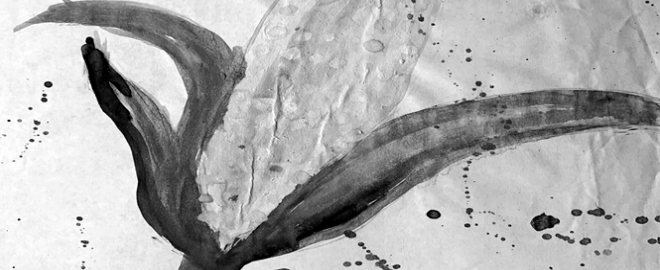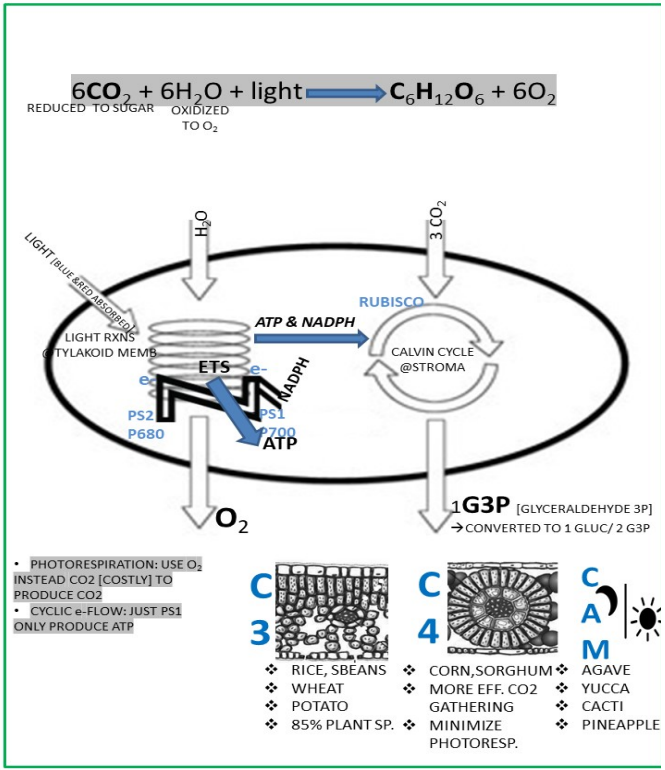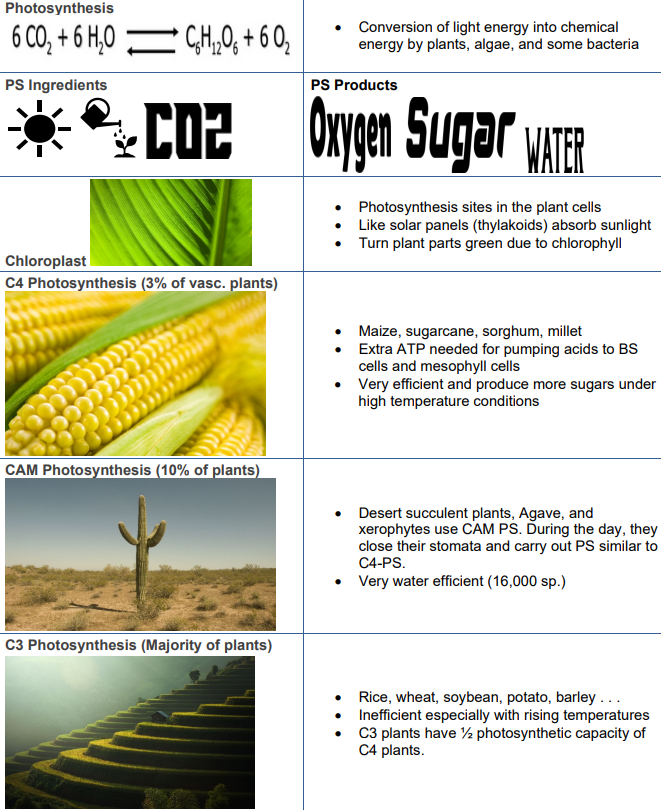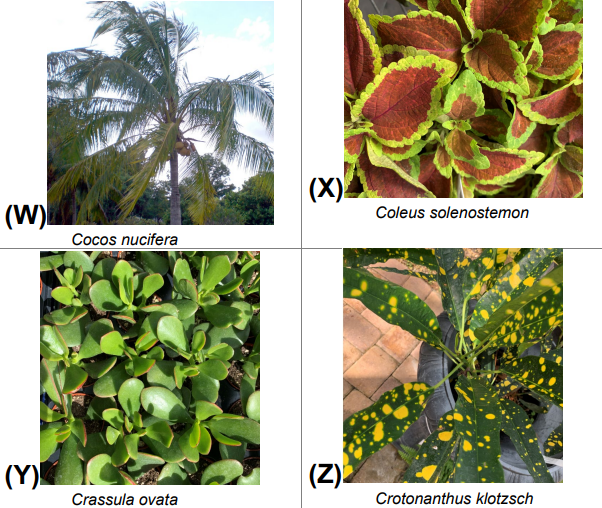1.16: Fotosíntesis (PS)
( \newcommand{\kernel}{\mathrm{null}\,}\)

La fotosíntesis (PS) significa producción de oxígeno para sostener la vida en el planeta Tierra. Además, la PS es de vital importancia para el rendimiento de los cultivos alimentarios y por lo tanto para la seguridad alimentaria La luz solar es la principal fuente de PS junto con la clorofila en el proceso de elaboración de alimentos.
Las plantas absorben dióxido de carbono (CO2) de la atmósfera para PS a las temperaturas óptimas. Por último, el rubisco es tanto la enzima más abundante en la biosfera como la enzima fijadora de carbono para producir alimentos. Sin embargo, algunas especies de plantas utilizan otra enzima más eficiente en PS, a saber, PEP carboxilasa a través de reacciones de separación de luz y ciclo de Calvin. Por ejemplo, las plantas C4 como el maíz y las plantas CAM como las piñas las separan en diferentes tejidos y diferentes tiempos, respectivamente. Por último, este proceso ayuda a las especies de plantas C4 y CAM a minimizar el uso de la fotorespiraciónO2 en lugar deCO2.
- SLO 16.01: Aplicar las mejores prácticas para el aprendizaje de la fotosíntesis
- SLO 16.02: Describir la relación entre luz y fotosíntesis
- SLO 16.03: Describir la relación entre clorofila y fotosíntesis
- SLO 16.04: Describir la relación entreCO2 y fotosíntesis
- SLO 16.05: Identificar especies de plantas dadas con sus nombres científicos en función de sus características clave
- SLO 16.06: Explicar las diferencias entre la fotosíntesis C3, C4 y CAM
- SLO 16.07: ¿Explicar las diferencias entre las reacciones de luz y el ciclo de Calvino?


- Valoración 1: VERDADERO o FALSO: La fotosíntesis es la inversa de la respiración celular.
- Evaluación 2: VERDADERO o FALSO: Plantas verdes, algas, cianobacterias, algunos protistas y pocos animales pueden realizar fotosíntesis.
- Evaluación 3: VERDADERO o FALSO: Mientras que el fitoplancton produce70% O2, las plantas terrestres producen30% O2 del mundo.
- Evaluación 4: VERDADERO o FALSO: Las plantas marinas obtienen algo de luz de los respiraderos hidrotermales para su fotosíntesis.

- TRUE
- TRUE
- TRUE
- TRUE


